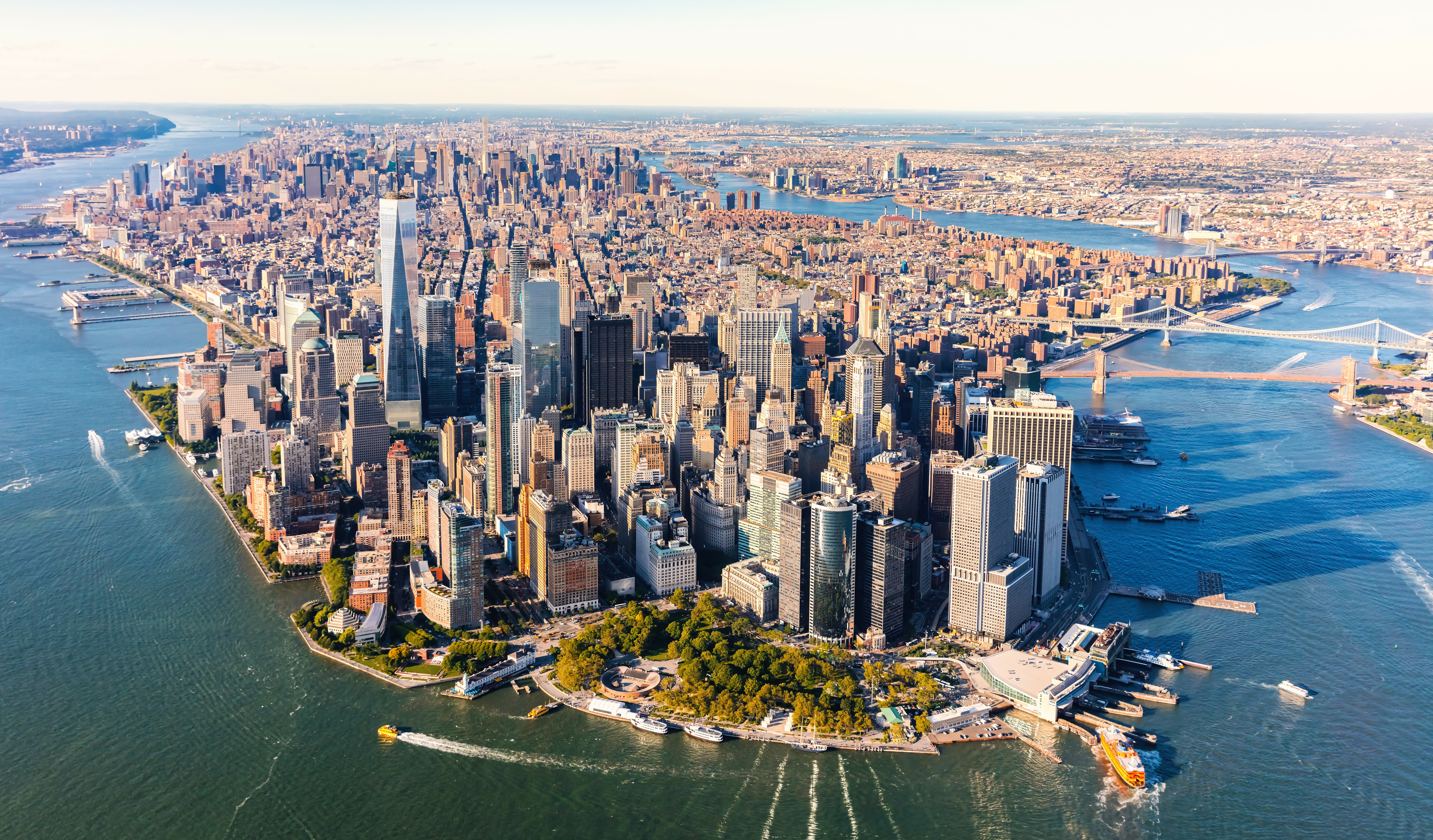How To Plan A Trip To New York City
Should you visit New York City? The Big Apple aspires to offer the best of everything, so of course you should. But more than just about any other city or country you might visit, New York City requires detailed and thoughtful planning from prospective visitors.
Unfortunately, many travelers miss out on an optimal New York experience because they try to do too much in too little time. To get the most out of a New York vacation, you need to carefully plan:
- When to visit
- How much to spend
- Where to stay
- How to get around
- What to do
- What to pack
We’ll show you how to do all of the above in this planning guide!
You won’t be there alone: New York City is a popular place to visit
As every schoolkid knows, New York is the nation’s largest city, with 8.8 million residents and a total population greater than that of the 10 least-populated states.
Not surprisingly, the city is popular with frequent travelers. More than one-third of the American travelers surveyed in the latest Safest Places survey conducted by Berkshire Hathaway Travel Protection said they had visited New York in the last five years.
That puts it just a whisker behind Las Vegas for the most popular destination in the world for American travelers, according to the BHTP survey.
Choosing when to visit
The better times to visit are when temps are moderate, prices are cheaper, crowds are down, and the sun is somewhere other than at its apex, so you can appreciate the interplay of light and shadow down the concrete canyons. Best times to visit include:
Valentine’s Day. Four out of five years there’s no snow, and most of the time there aren’t many tourists. Hotel deals can be had – especially romantic-themed packages – theater tickets are easier to score, and the light is gorgeous.
March and April. You get more opportunities for outdoor activities like bike rides. Springtime in Central Park is delightful.
May. This might be the best time of all to visit, and if your timing is right, you can catch the Westminster Kennel Club show – the Super Bowl of dog shows.
October and November. These are wonderful times to visit as well – right up to Thanksgiving and the Macy’s parade, which is best avoided, or at least watched on TV.
New York City gets increasingly warm and humid in late June, and stays that way through mid-September (though if you’re a tennis fan, the U.S. Open is the most accessible of the big tennis events). Crowds and prices are up for the holidays, but the decorations around Rockefeller Center are worth seeing. New York City around Christmas is arguably more magical than any theme park.
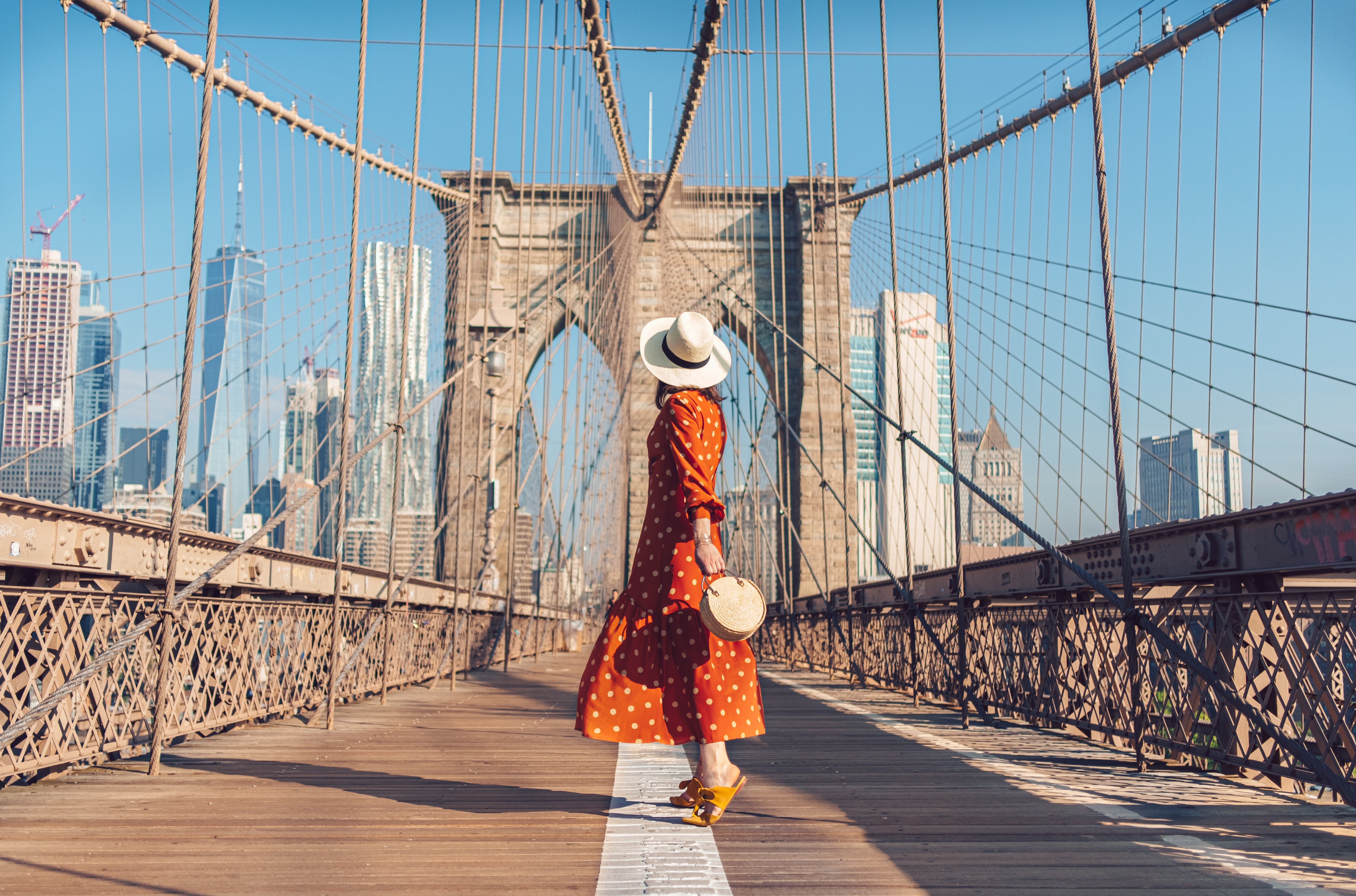
Be prepared for sticker shock
According to Numbeo, New York City is the seventh most-expensive city in the world, behind Hamilton, Bermuda, and five Swiss cities.
When you’re running with Zurich and Geneva, you’re running with the big dogs. Bear that in mind when you budget for your New York trip.
What’s expensive in New York? Everything from rent to transportation to food. You may not always feel it, since some of New York’s most quintessential eats are its cheapest, but if you stay near the theater district and do dinner and a show you’ll definitely be sporting a lighter wallet at the end of the night.
Planning a trip to New York City on a budget
How do you see New York on a budget? There’s no cut-and-dried answer, but these techniques will help:
- Look for specific off-peak opportunities. For instance, stay between the theater district and the Javits Center when there’s no major trade show at the Javits.
- Have one big meal each day. New York bagels are amazing! Have a bagel and cream cheese in the morning, snack on fruit, nuts, and granola bars during the day (or grab a $1 slice or a legendary “hot-water dog” from a cart) and have a nice dinner at night.
- Hoof it. New York City is wonderfully walkable. Bring good walking shoes, stay in a central location, and walk everywhere.
- Look for discount tickets. Tkts remains the best way to see a show for less. Also note: Weekday matinees during the shoulder season may lack the star power of the nighttime shows, but Broadway talent is world-class. You’ll never miss the marquee names.
- Choose your lodgings carefully. See below.
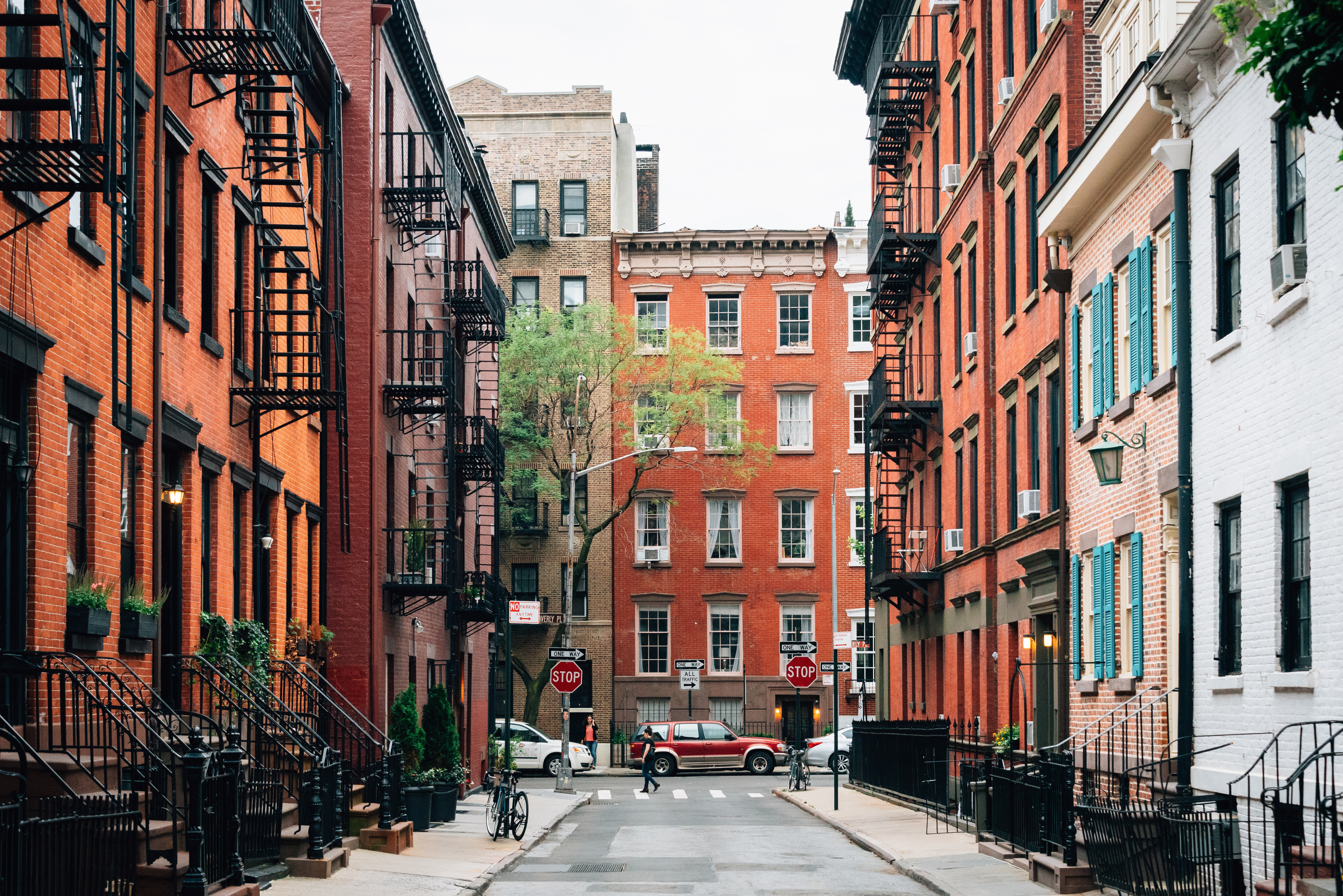
Choose your lodgings carefully (again)
Consider these three factors when choosing where to stay in New York:
- Location
- Safety
- Price
(You could argue amenities, but they come at a price, so it stays at three.)
Location
Location is about more than being in a cool place, though if you’re set on staying near Chelsea Piers, who are we to try to convince you otherwise?
Generally with New York City you should decide all the things you want to do and then find the best place to stay that makes it easy for you to get to those places.
It falls apart a little if your list includes Fort Tryon Park and the 9/11 memorial, but just because you should walk everywhere doesn’t mean you have to walk everywhere. New York does have buses, taxis and a subway.
Safety
Are some areas of New York safer than others? Absolutely. Like any big city, New York has its challenges.
According to the GeoSure app, the Garment District is safe. Chinatown is safe. Battery Park is safe. Harlem is safe. Washington Heights is safe. Compare the scores of these areas to neighborhoods in London or Paris and you’ll see.
Still, it always pays to check out the safety rating for your specific neighborhood before you book. And do all the safety things we talk about in posts like this one.
Price
If you’re going to splurge, might as well do it in New York.
If you're truly on a tight budget, consider staying in a hostel like The Local NY and Pod 51 or a budget hotel like The Jane or The Maritime – or stay in an outlying area and take the train in each morning. (This can be a good option for traveling with kids.)
Mid-range hotels like The Gansevoort and The Ludlow have been around forever and provide a respite from all the chain hotels that pepper areas like Times Square/Broadway.
On the high end, the sky is truly the limit. You owe it to yourself to stay at the Ritz-Carlton or The Plaza once in your life.
Finally, remember that a place that offers breakfast might be worth $15 more per night, and staying somewhere that’s slightly cheaper but a $20 cab ride away from the places you want to see or charges $50 a night for parking is no bargain.
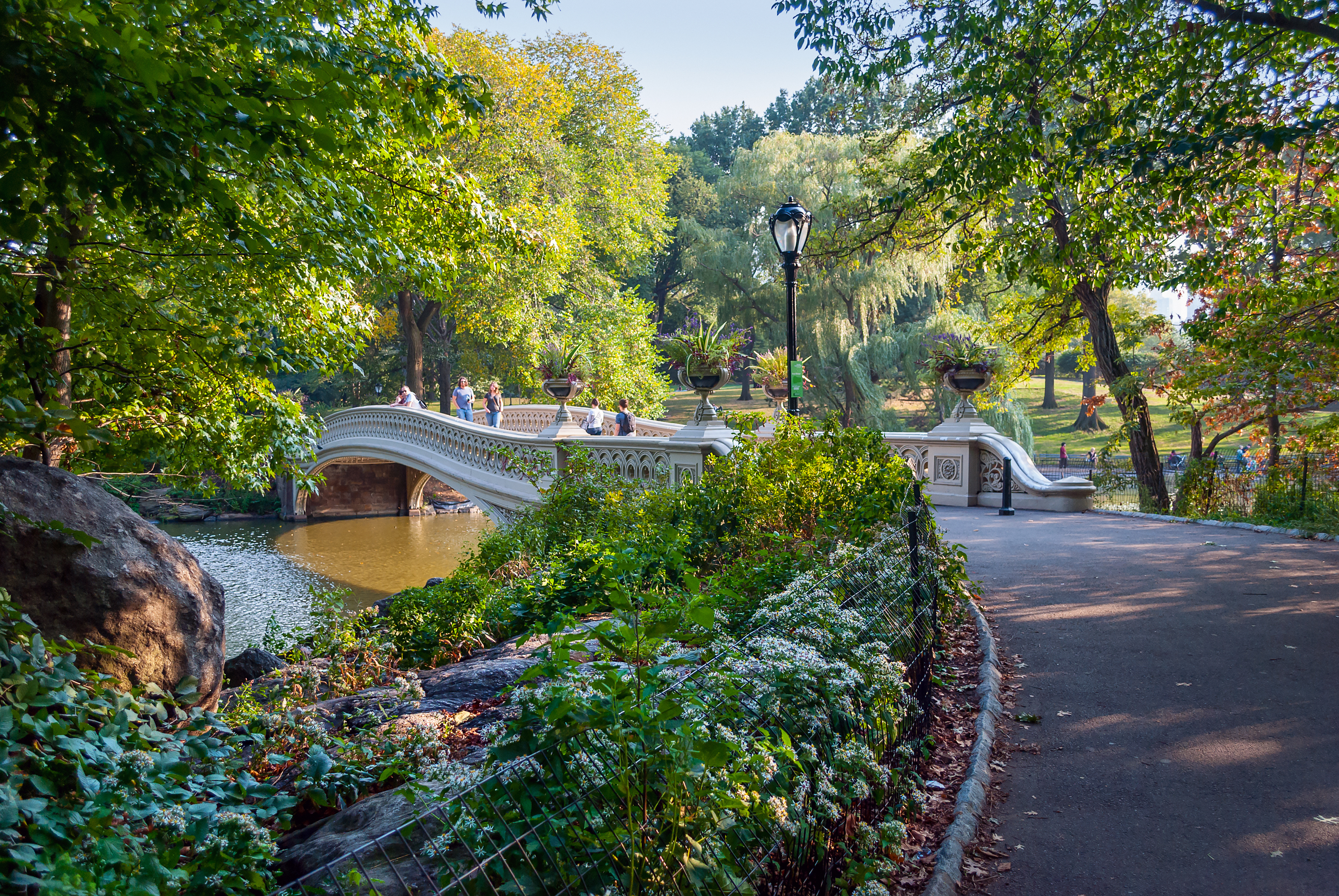
Getting around
New York City is actually quite easy to get around once you make it in from LaGuardia or JFK.
The city is laid out in an easy-to-suss grid pattern bisected on the diagonal by Broadway. To navigate, you just have to remember:
- Streets run roughly east-west while avenues run north-south.
- It’s a long distance between avenues and a shorter distance between streets.
- Central Park sits roughly in the middle, with museums surrounding its perimeter.
Subway lines connect Manhattan with Brooklyn, the Bronx, and Queens. While the names of the various lines can get confusing, everything’s color-coded. Get a map and a Metropass and you’ll be fine.
You shouldn’t burn out on New York City, but if you do, go to Grand Central and hop a Metro-North train to New Haven, Conn., walk around Yale University and have some white-clam pizza from Sally’s. It’s worth it just to say you did it (and to check out the spectacular Grand Central concourse).
If you drive to New York City … don’t. Driving is a challenge worthy of a video game, and parking typically requires using an app like SpotHero to reserve a space ahead of time.
On the other hand, as we mentioned, New York City is a wonderful city to walk around – and pedestrians have a greater chance of survival than in European cities like Rome or Paris or cities like Mexico City.
Deciding what to do
You’ll have a better trip and enjoy it more if you accept some basic facts about New York City:
- You’re probably not going to see everything in one visit.
- You’re going to come back sometime.
- You should focus on quality of experiences, not quantity.
In general, it makes sense to focus at least one day around Central Park and the art and history museums.
Ellis Island, the Statue of Liberty and the 9/11 Memorial will easily take up another day.
A Broadway experience may take up a third day.
Something special like a shopping spree or a Yankees game may take up a fourth day.
And that doesn’t take into account explorations of New York City food, Chinatown, Harlem, Rockefeller Center, the Empire State Building, and so much more.
How do you tackle it all? Two recommendations:
- Prioritize
- Hook up with a local
Prioritization
Accepting you’ll visit again someday makes it easier to prioritize – to knock off the Statue of Liberty and a Yankees game this visit and hit Broadway and Central Park another time.
If you take that approach, do it with some depth. Linger at the Met or MOMA. Soak in Ellis Island. Spend an afternoon at the New York City library reading the great New York newspapers of the 1940s and ‘50s on microfilm. Take a theater tour with Viator or GetYourGuide. Go to Yankee Stadium early and watch batting practice.
To avoid this dilemma during the planning stage, make your list of everything you want to do in New York City and cut it in half. Then cut it in half again. Then try to make those remaining experiences the best they can be.
Do that, and you’ll come away loving New York.
Find a native
Another way to love New York is to explore it with someone who really knows it – a native or ex-native.
They’ll cut through the confusion and clutter and help you find cool little places to eat and fun activities. They’ll point out the architectural flourishes and historical quirks that make New York so captivating.
If you don’t know a native who owes you a favor, don’t be afraid to go the for-profit route – i.e., take a tour.
New York City is a tour-taker’s paradise, with everything from mob and speakeasy tours to movie-location tours to punk-rock tours to haunted Manhattan tours.
Avoid the standard Gray Line routine. If there’s something you love, there’s probably an NYC tour dedicated to it.
These tours are great, but don’t overdo it. Give yourself some solo exploration time. You’ll never run out of New York City sights to see, and many times the best discoveries are the ones you make yourself.
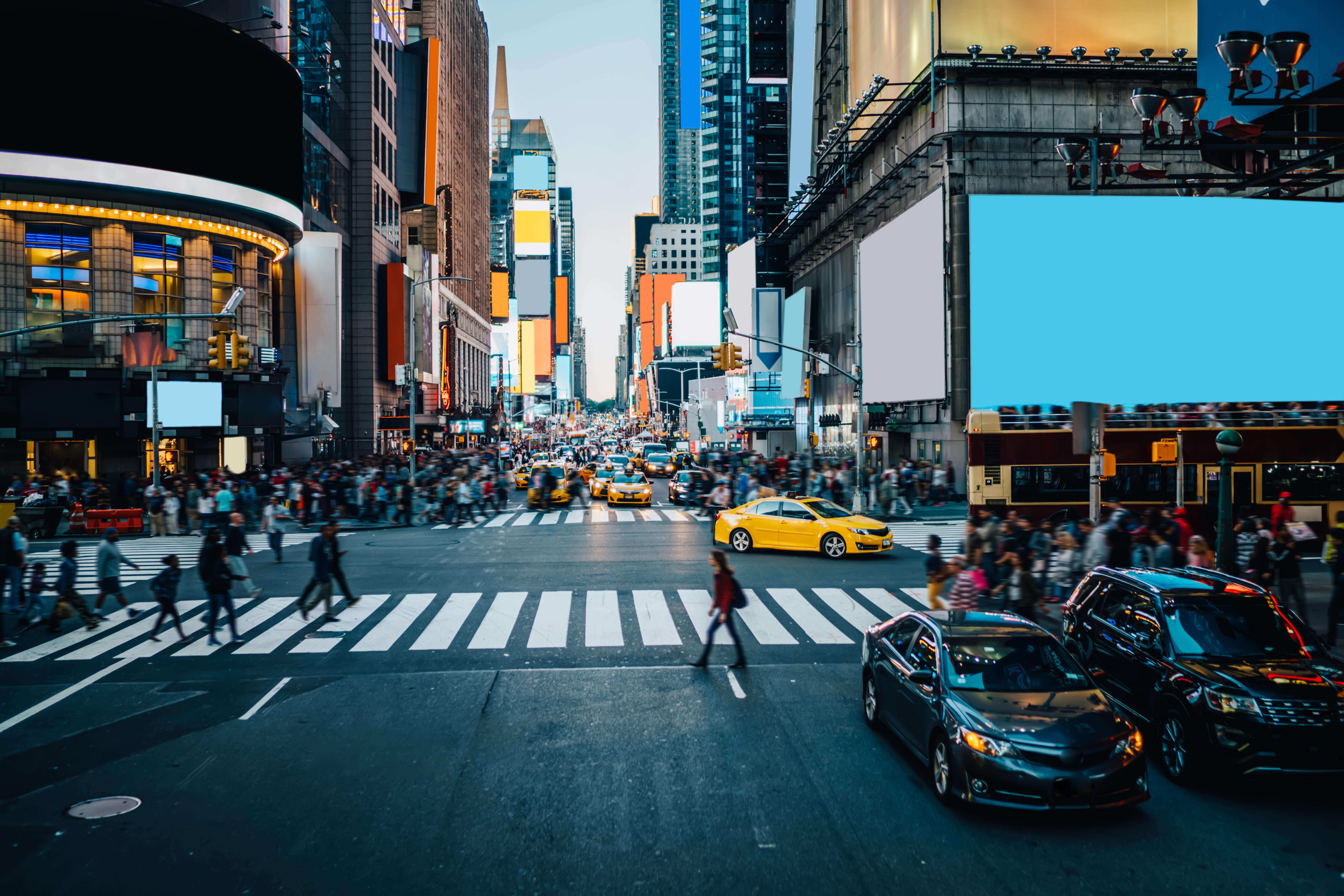
Pack for adventure
When you have a rough itinerary sketched out, build your packing list. Be sure to include:
- Walking shoes and rainwear
- Pants and/or shorts with plenty of pockets
- A backpack and water bottle (be prepared to check them if you’re visiting museums)
- Casual to spiffy-casual wear, with maybe a little something extra for the theatre
- A windbreaker for days when the wind howls through the skyscraper canyons
- Layers so you can adapt to changing weather conditions
Note that in non-summer months the New York City shade can be considerably colder than the sunny side of the street. It can be the difference between winter and spring.
As long as you’re packing for adventure, pack travel insurance. You’ll want to make a lot of advance purchases for your New York trip – hotel and show reservations, tours, tickets for Ellis Island and the Yankees – and travel insurance can help protect those prepaid expenses if medical emergencies or other covered reasons affect your travel.
Berkshire Hathaway Travel Protection offers a wide range of travel insurance plans to cover virtually any sort of New York vacations, from road trips to spare-no-expense bucket-list trips.
If you’ve wondered why so many people say they love New York, take your time and really plan out a New York City vacation and you’ll see for yourself.
And make plans to go back again. It’s a cinch that you’ll want to.
Questions About Travel Insurance?
Check out our online guide, "What Is Travel Insurance All About?" We've provided in-depth answers to all your travel insurance questions, starting with the basics.
